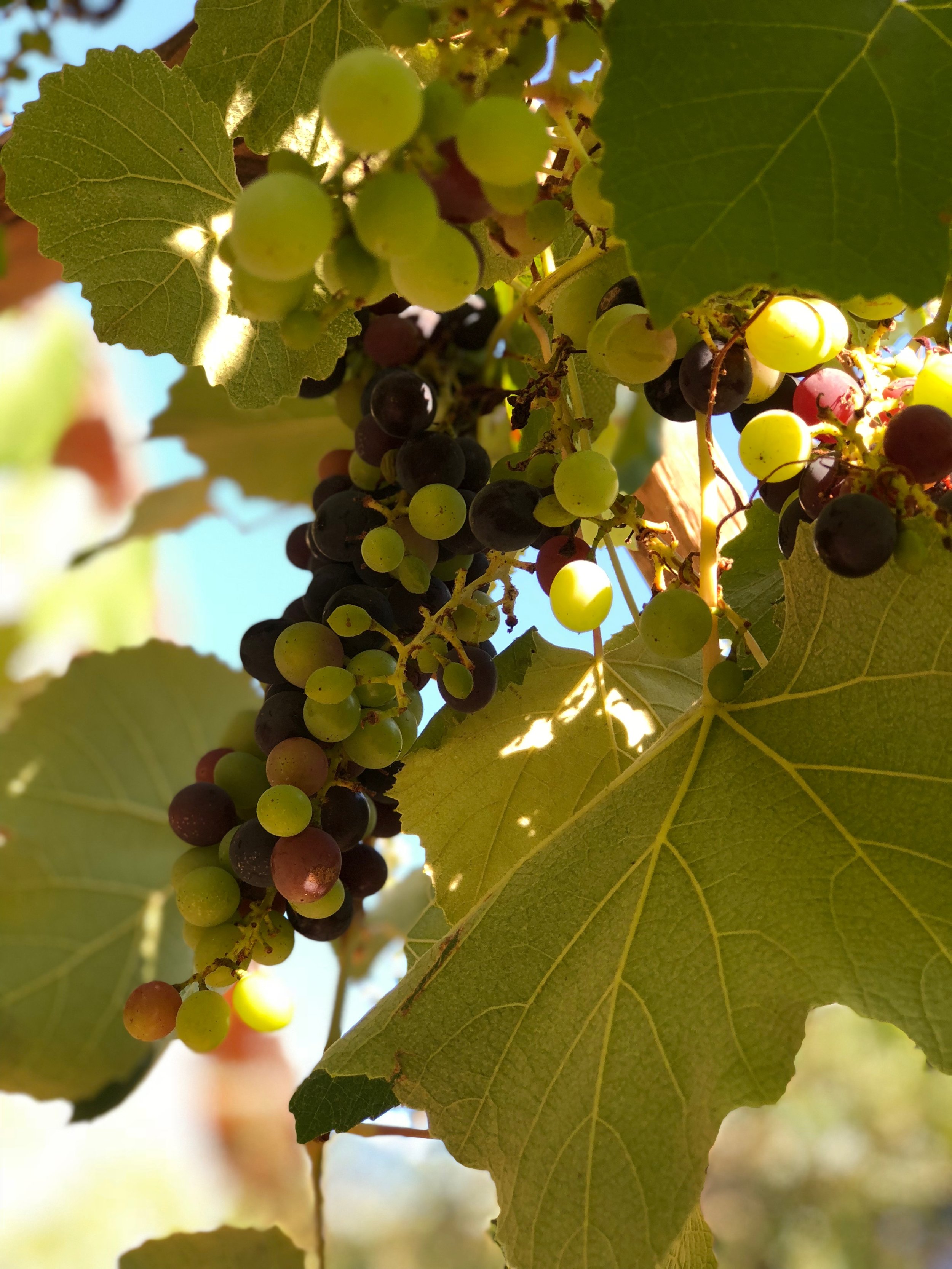The Seven Species: Grapes
/Grapes on a grapevine in Tzfat, Israel (2004).
It often takes a visit to a foreign country to seek to understand the daily routines we inhabit, the choices we make and the outcomes that we take for granted.
In our daily hustle and bustle, in our quest to become efficient, organized and timely, we neglect aspects of our lives to which we have become habituated, desensitized and detached. The specific area to which I refer is meals, where detachment is a part daily life.
For instance, when you stand to recite that Friday night blessing over the wine –
“Blessed are You, L-rd our G‑d, King of the universe, Who creates the fruit of the vine.”
– are you mindful of what you are drinking? Have you thought about the farm where the grapes were planted, grown, nourished, harvested, prepared and bottled; the quality of the soil and the type of irrigation used; the identity of the sommeliers who have overseen the cultivars that we take for granted as brand-name wines? Have you thought about what the “fruit of the vine” actually looks like?
When you purchased that bottle from your local market, you probably had no idea where it came from. And, beyond checking that you recognized the brand name or the grape varietal, you probably never cared. Western culture is obsessed with turning everything into a brand name. Wine and grape juice are not immune from this game of convenience.
But behind every wine brand is a vineyard with juicy, ripe grapes.
I visited Israel in August for my best friend’s wedding. Afterward, while traveling in the northern region of the country, I visited two organic farms and a hydroponics greenhouse. One crop I saw a lot of was grapevines.
The Amphorae Winery in the Carmel Valley, Israel
At the base of the Carmel ridge in the Makura Farm is the Amphorae Winery, often cited as the most beautiful winery in Israel and visually reminiscent of Bordeaux or Tuscany.
The Amphorae Winery in the Carmel Valley, Israel
I experienced a sense of wonder in exploring these vineyards: the famous and familiar names of the grape varietals juxtaposed against the unfamiliar vines themselves. It’s rather remarkable to walk a vineyard and recognize the names – Cabernet Sauvignon, Sauvignon Blanc, Chardonnay, Merlot, Cabernet Franc, Shiraz and Petit Verdot – while seeing the actual grapes and the shapes of their leaves for the very first time. I got to place a visual on the plant-based origin of the wines that I’d been drinking for decades. I realized for the first time that these were more than just brand names or regions printed on a bottle. Unless you are knowledgeable about wines, it’s just not something that naturally springs to mind.
And now, when saying the blessing over the wine, I can visualize those grapevines blowing in the warm coastal breeze, the shape, texture, color and flavor of the grapes, the gently rolling hillsides that channel Tuscany.
* For the purposes of this blog, Amphorae Winery is unfortunately not certified kosher; hence I was unable to taste the wine. However, the agricultural aspect of this organic farm was undeniably top-notch.















